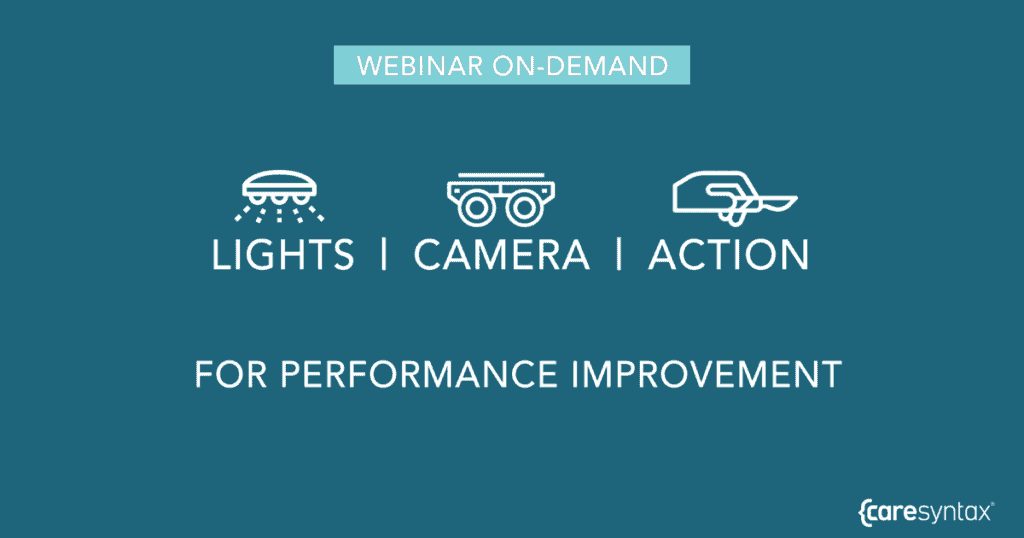
Webinar
Lights, Camera, Action – for Performance Improvement
Read More

Caresyntax Article
March 5, 2020
An article recently published in the Journal of Surgical Education has a tongue-in-cheek title based on the oft-quoted surgical training quip, “ See one. Do one. Teach one.”
The obvious meaning harkens back to the apprenticeship model, where a resident-in-training would watch a surgeon do a procedure, then, under careful eye of the staff surgeon, do the next case. Once proficiency was demonstrated (however defined), the resident would teach another trainee the procedure.
In brief, the OR is the classroom, at least for the development of surgical technical skills.While this model grossly oversimplified the actual residency experience, the article, “See None, Do Some, Teach None: An Analysis of the Contemporary Operative Experience as Nonprimary Surgeon,” provides a data-driven reality check on what has evolved over the past three decades in surgical training.
Jumping to the article’s conclusion, resident experience as both a first assistant (FA) surgeon and a teaching assistant (TA) surgeon—basically operating as the staff surgeon—has decreased precipitously. The authors note, “it is essential that surgical educators recognize and rectify these trends.”
Even in core aspects of general surgical training, the experience of FAs has dramatically declined (see figure). The largest decrease in exposure is in the critical areas of general surgery—colon, breast, hernia, biliary, trauma, and thoracic. It leaves one wondering, “What’s left?”
The authors of the manuscript note that surgical educators and senior residents can encourage the more junior residents to “come to the OR whenever able,” as observational experience is a critical piece of the FA experience. They point out that junior residents face a steep learning curve in the OR, and repeated observation can help them understand key elements of surgery, such as steps in a procedure— things such as exposure and maneuvers that assist the operating surgeon—best learned by observing “master surgeons.”
These findings raise some questions on the current state of affairs and need to be addressed with comprehensive solutions.
In the article, “Now Arriving: Surgical Trainees From Generation Z,” Paul Schenarts, MD, provides some much needed insight to the current scenario.
He extensively reviews the new generation of individuals entering residency programs, and highlights aspects of their learning style that provides clues to potentially reduce the impact of declining hands-on training. He notes that Gen Z (individuals born after 1997) prefers “sensorial, immersive learning experiences that are interactive, pragmatic, gamified” and on-line videos are their preferred platform to learn new information. Generation Z also requires frequent feedback, and they wish to have it soon after events.
To address the needs of these young residents, it is important to migrate training and coaching experiences to technology platforms that motivate them and make their learning processes easier.
Imagine a situation where they would have access to a rich video library of exemplary surgical cases and can learn the key steps to any procedure. They would be able to observe cases of varying difficulties on video, even before going into the OR. Finally, when they would perform laparoscopic surgery in the OR, with the help of recorded video, their technical skills could be assessed by a staff surgeon using standardized, validated assessments.
Assessments would be available to them on their mobile phones — including key feedback linked to individual steps of the procedure , and in the process, they could track patient outcomes. All these features are now possible to find in one single software platform.
It’s time to give this young and tech-savvy generation the much needed out-of-the-box surgical training alternatives that excite them, satisfy their requirements and eventually meet the needs of their future patients.